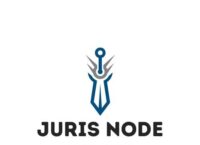
Money laundering has been a prevalent problem for decades, and its origin can be traced back to organized criminal activities in the West. The infamous ‘Watergate Scandal’ gave rise to the term ‘The Mafia,’ to legitimize their income on paper, they indulged in the ownership of laundry houses in the United States.
However, the practice of money laundering has deeper roots than just the Mafia. Let’s take a closer look at the brief history of money laundering.
The Birth of Money Laundering
The Father of our Nation, Mahatma Gandhi, once said that money is not evil as such but is the root cause of evil intentions. Money is necessary for the proper functioning of societies post the Barter system generations.
However, how it is used must be regulated due to its power. The term “money laundering” originated from the prohibition era, where organized criminals in the United States used laundry businesses to legitimize their earnings from bootlegging and other criminal activities.
The Rise of the Mafia
The Mafia usually acquired their money through extortion, drug sales, gambling activities, dodgy liquor sales, sex trafficking, contract killing, corruption, bribery, and other illegal means.
They would mix their illicit earnings with legitimate income from businesses like laundry houses to legalize their stash. The infamous American gangster, Al Capone, made use of this tactic to launder his money. The practice became so prevalent that it led to the rise of the term “the Mafia.”

The Swiss Bank Accounts Scam
If the author were to ask a layman today about the most infamous ‘laundering’ technique, they would probably point towards the Swiss National Bank.
Meyer Lansky deposited his illegal money into Swiss bank accounts and then disguised his withdrawals as zero or very low-interest loans provided by the bank. He could further declare these withdrawals as a measure for a tax deduction, thus originating the scam.
It eventually became a go-to exercise for drug traffickers, which led to the increased motivation for governments worldwide to curb this.
Hawala: The Indian Parallel Banking System
A well-renowned system developed in India has been that of Hawala, which runs parallel to the traditional banking methods to launder money. It originated in the 8th century and was very ripe during the time of the Islamic Empire in the Middle East.
The Hawala system does not require the physical movement of money. Instead, intermediaries receive money from Country A and instruct their agents to transfer funds already in Country B to the beneficiary.
The system involved journals keeping records of transactions and the element of trust between the parties involved.
Conclusion
In conclusion, money laundering has been a significant problem for centuries. Criminals have used it to launder their illegal earnings and make them appear legitimate. The practice has evolved over time, and various methods have been developed to curb it.
However, it continues to be a significant issue, and governments worldwide continuously look for new ways to combat it.
Money is essential for the functioning of societies, but it must be regulated to prevent it from being used for nefarious purposes. The history of money laundering teaches us that we must be vigilant and proactive in identifying and preventing criminal activities that harm our society.
We must continue developing new methods to detect and prevent money laundering and ensure our financial systems are secure and reliable.
By
Vijay Pal Dalmia, Advocate
Supreme Court of India & Delhi High Court
Email id: vpdalmia@gmail.com
Mobile No.: +91 9810081079
LinkedIn: https://www.linkedin.com/in/vpdalmia/
Facebook: https://www.facebook.com/vpdalmia
Twitter: @vpdalmia




